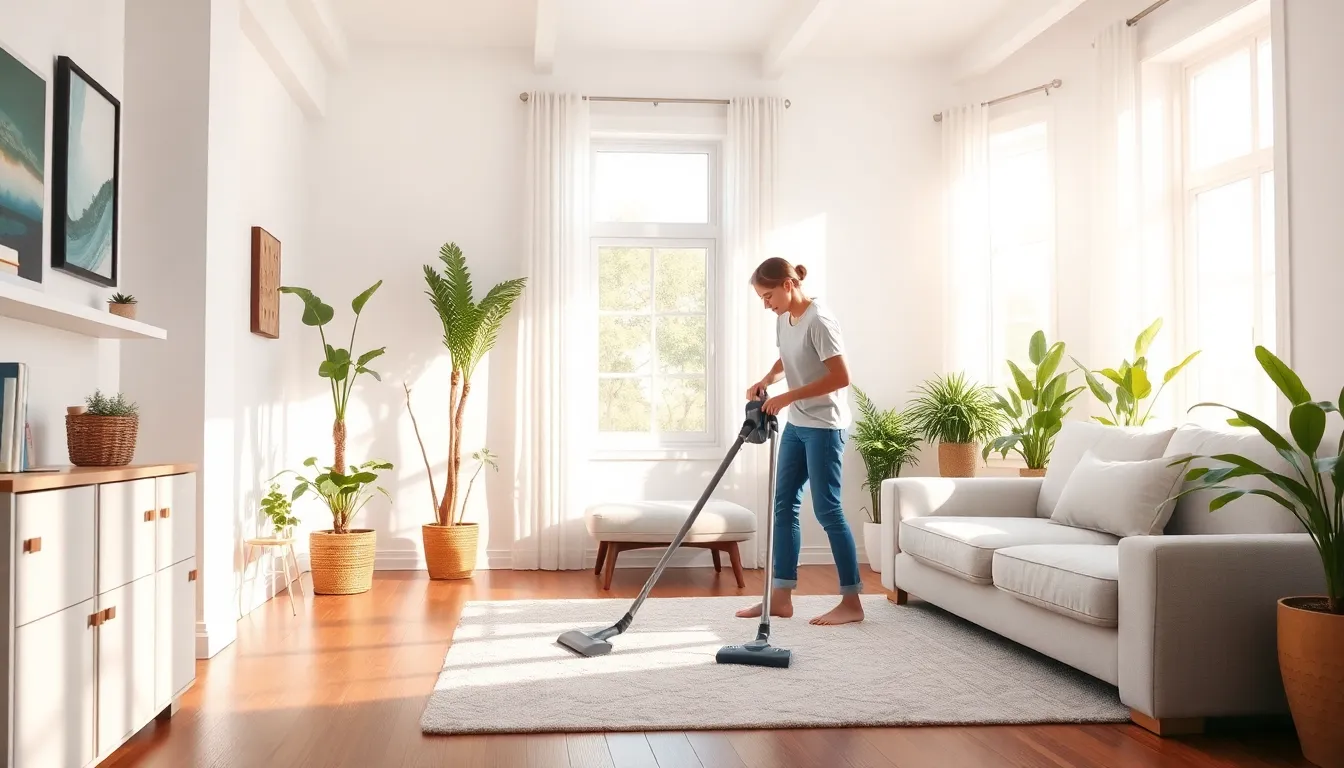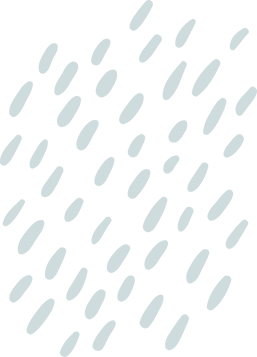Allergies can turn the coziest home into a sneeze-fest faster than you can say “dust bunny.” With pollen, pet dander, and dust mites lurking around every corner, it’s no wonder many find themselves reaching for tissues instead of enjoying their favorite couch. But fear not! Allergy cleaning is here to save the day and your sinuses.
Table of Contents
ToggleWhat Is Allergy Cleaning?
Allergy cleaning focuses on removing contaminants that trigger allergic reactions within the home. It addresses common allergens such as dust mites, pollen, pet dander, and mold. By employing specialized techniques and products, allergy cleaning enhances indoor air quality and reduces irritants.
First, vacuuming plays a crucial role in allergy cleaning. Using a vacuum with a HEPA filter captures tiny particles that regular vacuum cleaners might miss. Regular dusting is essential too. Microfiber cloths trap dust and allergens effectively, preventing their recirculation into the air.
Additionally, washing bedding in hot water eliminates dust mites and their allergens. It’s recommended to wash sheets and pillowcases at least once a week to maintain a healthy environment. Cleaning carpets and rugs also benefits allergy sufferers. Professional steam cleaning can remove embedded allergens from fibers.
Another critical aspect includes controlling humidity levels to prevent mold growth. Using dehumidifiers in damp areas reduces the likelihood of mold flourishing. Implementing air purifiers throughout the home further improves air quality. These devices filter out allergens and other pollutants, contributing to a more comfortable living space.
Regular maintenance of HVAC systems aids in allergy cleaning as well. Changing air filters every one to three months ensures optimal performance and reduces dust circulation. Following these practices creates a significant difference in managing allergies and enhances overall well-being.
Benefits of Allergy Cleaning

Allergy cleaning offers numerous advantages, significantly enhancing the living environment for individuals affected by allergies. Two primary benefits include improved indoor air quality and reduced allergy symptoms.
Improved Indoor Air Quality
Enhanced indoor air quality stems from effective allergy cleaning. Specialized cleaning methods, such as using vacuums equipped with HEPA filters, help trap airborne allergens. Air purifiers can also play a crucial role by filtering out dust, pollen, and pet dander. Regularly changing HVAC filters further maintains cleaner air circulation. Additionally, controlling humidity levels with dehumidifiers limits moisture and prevents mold growth. All these actions collectively lead to fresher, healthier air within the home.
Reduced Allergy Symptoms
Lowered allergy symptoms emerge as an outcome of thorough allergy cleaning. Removing common triggers leads to noticeable relief from sneezing, congestion, and itchy eyes. Washing bedding in hot water eliminates dust mites, which are notorious for aggravating allergies. Employing microfiber cloths for dusting captures more allergens than traditional methods. Regular professional carpet steam cleaning also reduces irritants embedded deep within carpet fibers. These practices contribute significantly to minimizing allergic reactions and promoting overall well-being.
Allergy Cleaning Techniques
Allergy cleaning involves systematic approaches to reduce allergens in the home. Implementing effective practices makes a significant difference in air quality and comfort.
Deep Cleaning Practices
Deep cleaning practices focus on thorough removal of allergens. Vacuuming frequently with HEPA-filtered vacuums captures smaller particles effectively. Dusting surfaces with microfiber cloths prevents dust from settling back into the air. Washing bedding weekly in hot water eliminates dust mites and allergens. Steam cleaning carpets and upholstery sanitizes surfaces while removing embedded irritants. Regularly cleaning drapes and other textiles provides further protection against allergens.
Use of Specialized Products
Using specialized products enhances the effectiveness of allergy cleaning. Allergen-proof mattress and pillow covers create a barrier against dust mites. Cleaning solutions labeled hypoallergenic minimize irritants during regular cleaning. Air purifiers utilize advanced filters to capture airborne contaminants, significantly improving indoor air quality. Mold inhibitors offer protection against humidity-related allergens in damp areas. Choosing fragrances-free products prevents further irritation for sensitive individuals. Overall, integrating these specialized tools contributes to a cleaner, healthier living environment.
Choosing Allergy Cleaning Services
Selecting the right allergy cleaning service significantly impacts the effectiveness of allergen removal. Identifying qualified providers requires careful consideration to ensure optimal results.
What to Look For
Look for services that specialize in allergy cleaning to address specific needs effectively. Check for certifications and training programs in allergen management to guarantee expertise. Evaluate the use of advanced equipment, especially HEPA-filtered vacuums and air purifiers, to enhance cleaning efficiency. Consider companies that offer customizable cleaning plans tailored to individual sensitivities. Positive reviews from satisfied clients also indicate reliable service. Assess the cleaning products used, ensuring they’re hypoallergenic and safe for indoor environments.
Questions to Ask
Ask potential service providers about their experience in allergy cleaning to gauge their specialization. Inquire about the techniques they employ for allergen control, such as deep cleaning and dust mitigation. Clarify whether technicians are trained in allergen management and safety. Confirm the frequency of maintenance recommendations, focusing on long-term solutions for indoor air quality. Finally, discuss the guarantee of satisfaction and commitment to follow-up services to ensure continued relief from allergens.
DIY Allergy Cleaning Tips
Effective allergy cleaning techniques can make a significant difference in indoor environments. Start by vacuuming carpets and rugs at least once a week using a HEPA-filtered vacuum. HEPA filters capture small allergens like dust mites and pet dander, preventing them from re-entering the air.
Washing bedding every week in water heated to at least 130°F can remove allergens effectively. Use allergen-proof covers on mattresses and pillows to provide an additional barrier against dust mites.
Dusting surfaces with microfiber cloths helps trap rather than scatter dust. Regular dusting of furniture, shelves, and electronics minimizes the buildup of allergens.
Utilizing air purifiers with HEPA filters improves air quality in homes. Placing air purifiers in bedrooms and living areas helps reduce airborne allergens effectively.
Controlling indoor humidity also plays a critical role in minimizing allergens. Keeping humidity levels between 30% and 50% discourages the growth of dust mites and mold.
Deep cleaning carpets and upholstery every six to twelve months ensures thorough allergen removal. Professional steam cleaning can provide a more in-depth clean that regular vacuuming may miss.
Regularly changing air filters in HVAC systems promotes better air quality. Replacement every 1 to 3 months is essential to maintain optimal filter performance.
Organizing clutter can minimize dust accumulation. Storing items in sealed containers prevents dust buildup and makes cleaning easier.
Implementing these DIY allergy cleaning tips can significantly enhance comfort for allergy sufferers. Frequent cleaning and maintenance contribute to a healthier indoor environment.
Allergy cleaning is a vital practice for anyone looking to improve their indoor environment and reduce allergy symptoms. By employing specialized techniques and tools, individuals can create a healthier living space that promotes well-being. Regular maintenance and the right cleaning products play a crucial role in managing allergens effectively.
Incorporating DIY tips and considering professional services can further enhance results. With consistent effort and the right strategies, a comfortable and allergen-free home is achievable. Prioritizing allergy cleaning not only benefits health but also transforms living spaces into havens of comfort.




